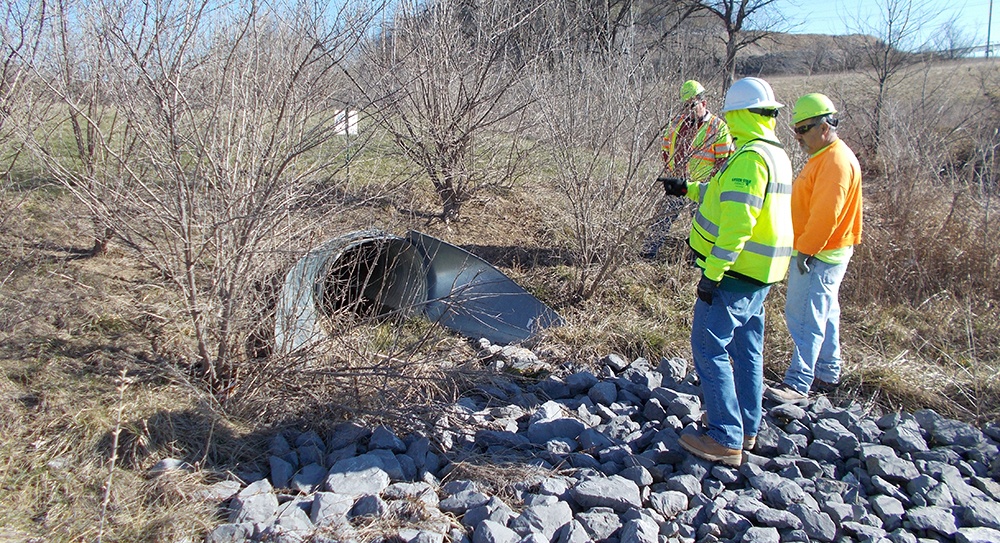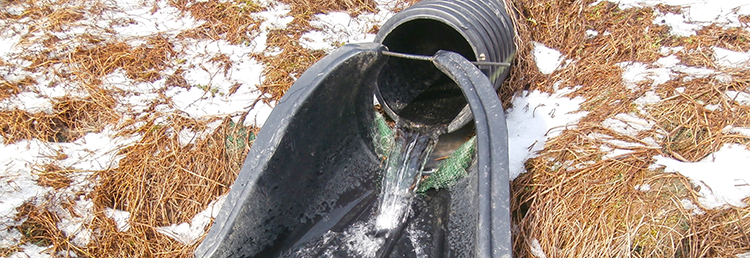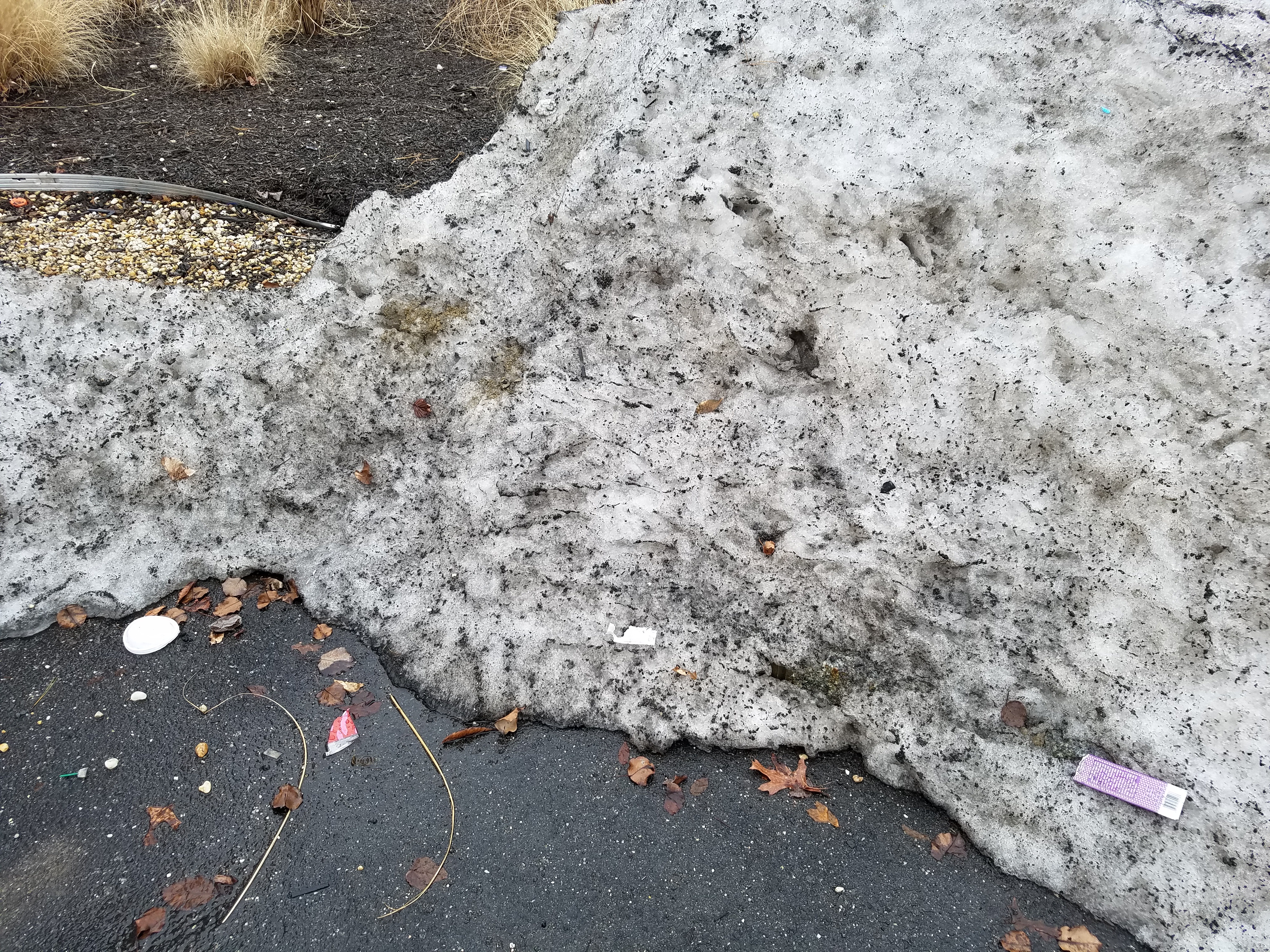We explain how you can get better stormwater samples from our stormwater outfall.
For anyone out there that works at or operates an industrial facility, chances are you have (or need!) an NPDES permit. Might be for stormwater, might be for a commingled discharge, but the point is most operations have some sort of permit they need to stay in compliance with. Even more to the point, you probably have to sample stormwater leaving your site and get it tested.
Many of our clients need help in determining where, when, and how to properly sample stormwater to get the best possible stormwater samples they can. While we're always here to help, we can’t hold their hand 24/7, which is why we try and teach our clients as best we can to achieve great sample results on their own.
How can I get better stormwater sample results?
It goes without saying, sometimes the results aren’t exactly what you wanted, and this could be from a number of different reasons.
We get the question “how do I get better stormwater results?” all the time. And we always say the same thing right off the bat - clean your site up. It still amazes me how many operations out there just accept the fact that their employees litter all over the yard, or material spills are left ignored, or worse!
While cleaning up is a great place to start, the vast majority of times the area that impacts your stormwater sample results is the outfall itself.
Here are a couple quick tips on how to manage your stormwater outfalls in order to get the sample results you want.

1 - Clean up your stormwater outfall discharge point.
If you poured a bottle of water into a garbage can full of trash, would you expect clean water to collect at the bottom? NO! So why are so many outfalls left in such a messy, dirty state?
This one is the easiest, simplest, and quickest. Clean it up. Plain and simple. I can’t tell you how many times I’ve gone to a facility and looked at the outfall and thought immediately “it’s no wonder why you’re getting bad results”. I’ve seen garbage, soda bottles, coffee cups, tires, drums, aggregates, pizza boxes, decaying food, you name it, I've seen it at an outfall. Clean that stuff up! Eliminate the trash, remove the drums and tires, and just clean it up!
2 - Stormwater outfall discharge points shouldn't be dirty.
Now that the outfall is cleaned, we can start to address some simple techniques to get better samples and the easiest practice is to remove the dirt.
Dirt, soils, sands, etc. are full of pollutants. Dirt (depending on the chemical composition of the dirt) could be acidic, basic, high in iron, contain lead, or have any other number of metals or pollutants in it. Think of dirt as an absorbent that absorbs different pollutants. Some chemicals, metals, and pollutants actually cling to the dirt, which acts as a transporter. When it rains, all this BAD dirt gets discharged through your outfall and into your sample bottles.
So get rid of the dirt! If your outfall is unpaved, line it with stone. If you want something easier to maintain, pave it, and then sweep it on a routine basis. Just simply by removing the dirt, you should start to see significantly better results.

3 - Filtering your stormwater is key.
No trash, no dirt, paved surface swept daily, and still need better results? Try filtration. There are dozens of different filtration techniques out there from sand or stone berms to filter socks to filter presses. What's right for you is going to depend on your facility, outfall, budget, and other variables.
Having seen them all, probably the easiest and cheapest to get is hay bales. You can stack them, line them up, create filter walls, channels, replace them quickly and easily and cheaply, and they do a great job. People that use these see good results time and time again.
Remember how I mentioned some chemicals and metals cling to the dirt, well using a filter does the same thing. Dirt and metals and other pollutants cling to whatever you’re using and get filtered out. This is a sure-fire way to get better results.
4 - Slow down the stormwater outfall.
Another method is to slow the water down. The way people achieve this is by installing some sort of detention basin. A lot of folks get detention and retention confused, so I always tell them to remember it like this:
- Detention - Detain and then release. Like after-school detention - they keep you after class and then let you go.
- Retention - Retain and no release.
Adding a detention basin, big or small, will allow the water to slow down and settle before being discharged. The slower you allow the water to discharge the better. If you add channels or weirs that direct the water and slow it down, you should see better results. When water is moving slowly, sediments fall out of suspension and sink to the bottom, so if you slow down the torrent discharging through your outfall, the water has more time to settle, which means less sediment in the water being discharged. Whether this is feasible or not, this has been proven to generate good results.
How good can your stormwater samples get?
Is it possible to get your stormwater sample so clean you could drink it? Maybe! The sky is the limit.
While some might think those 4 items listed above are too simplistic, I encourage you to check your outfall right now and see how it looks. Is there trash? Dirt? Do you have some sort of filtration? If so, what shape is it in? I'm always surprised so many facilities are left wondering why their samples are so bad, and then during a site visit, we show them their outfalls are a disaster.
Regardless, these are the 4 easiest methods, although I guess you could say the 4th idea is a little complex but can be easily implemented and requires less know-how than more extreme methods. These methods are the foundation of a great stormwater sample, but the truth is there are many, many different methods you could implement. Filtration, sedimentation, evaporation, chemical treatment, adsorption, or even biological methods. People have even gone to such lengths as to implement phytoremediation, which is the process of using plants to remove contaminants, or bioremediation, which uses microorganisms to remove pollutants.
Bottom line, I wouldn’t drink the water discharging from your site, and neither should you, regardless of how clean it is. But just know there are methods out there that you can implement to get your water ultra-clean, if not cleaner than water coming out of your tap.
Now that you know exactly what to do to make the water leaving your site as clean as can be, this should be a piece of cake.
Sometimes the answer is easy, add filtration, sweep the site and you’ll get better results. But sometimes the answer is tough, and that’s where adding things like chemicals, engineered water detention or retention systems, bioremediation, or plants are beneficial to reducing and/or removing the pollutants at your site.
Need help with stormwater permit compliance?
For a lot of folks out there, this is a pain to deal with. After all, you have a business to run! If you're overwhelmed, you're not alone. RMA has been actively involved in helping companies get and stay in compliance with stormwater permits across the United States since our founding in 1992. Long story short, we know the ins and outs of the environmental problems industrial and commercial facilities face and can help you get into compliance with stormwater permits and other applicable environmental laws and regulations, ensuring your business stays out of trouble and in compliance.
Our staff members have been on-site at thousands of operations across the country, so when we say we've seen it all and done it all, we mean it. We've helped everyone, from globe-spanning, multi-national organizations to small "mom & pop" operations. No matter your size or location, we'd love to learn how we can help.
So, if you're having any type of issue at your facility and need the help of an environmental consulting firm with a proven track record, reach out. Even if we can't help, we’ll do our best to steer you in the right direction. Feel free to contact us at info@rmagreen.com, click here to contact us, or give us a call anytime at 888-RMA-0230 to learn how we can help your facility deal with stormwater permits and other environmental regulations.
Additional Stormwater Permit Information




